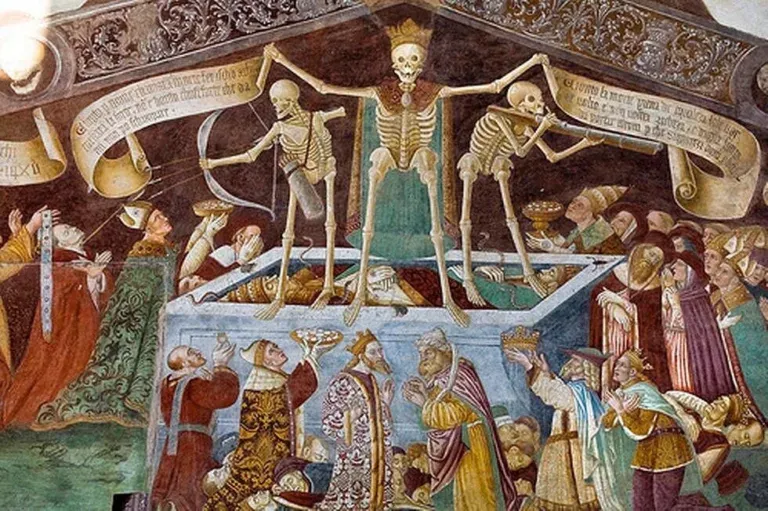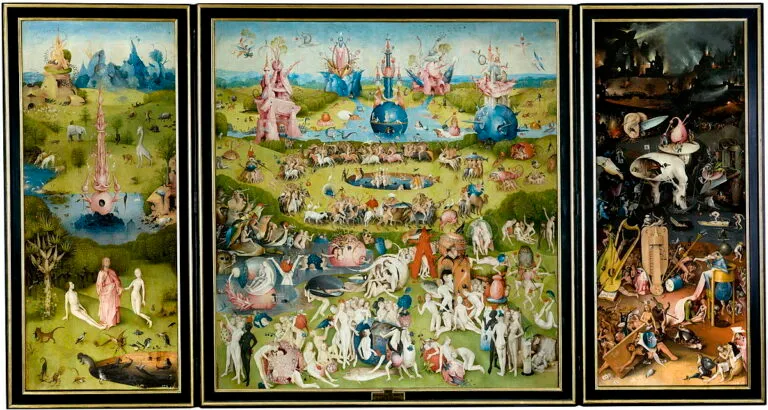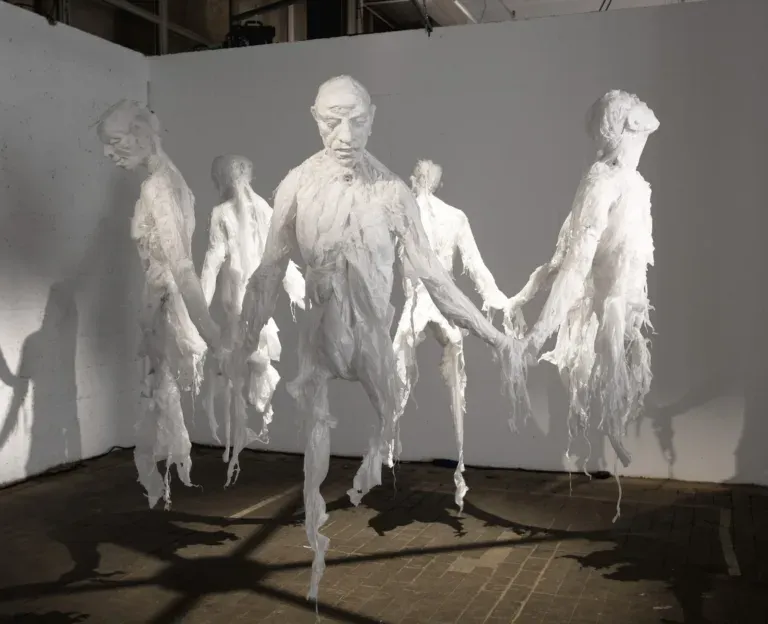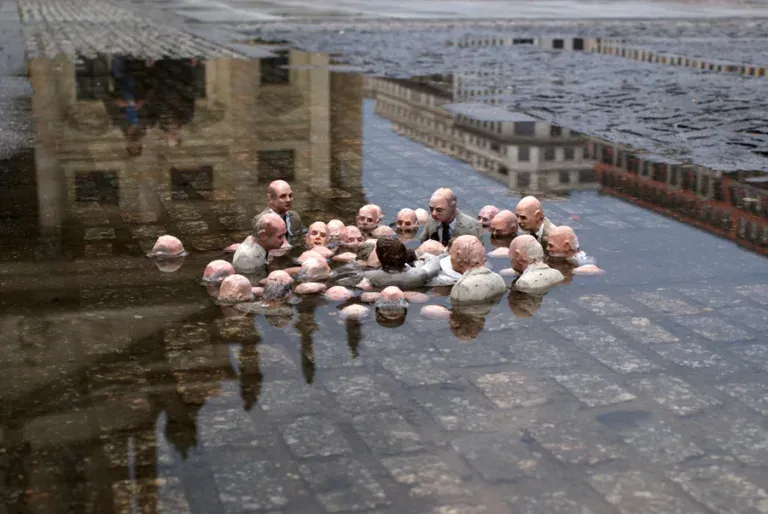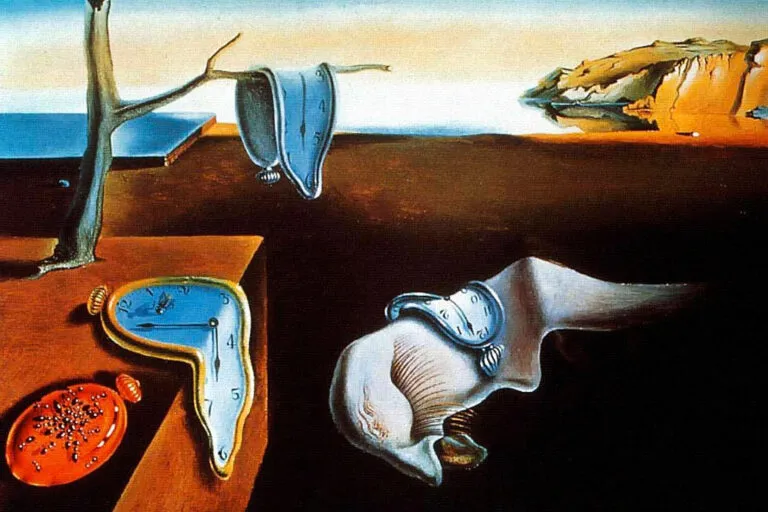Mark Jenkins’ Urban Art
Mark Jenkins is a contemporary American artist known for his disturbing horror sculptures that challenge perceptions and evoke strong emotional reactions. His urban installations and gallery works play with ambiguity and surprise, transforming public and private spaces into theaters of anxiety and wonder.
 The Art of Disquiet
The Art of Disquiet
Mark Jenkins’ sculptures are distinguished by their ability to confuse and disturb the viewer. Primarily made of adhesive tape and resin, these works often depict human figures in unsettling and often macabre situations. Jenkins’ technique, which involves wrapping mannequins with layers of adhesive tape to create realistic forms, gives his creations a realism that amplifies their emotional impact.
Human Figures: Ethereal and Macabre Presences
Jenkins’ human figures, often placed in urban contexts, seem frozen in moments of crisis or vulnerability. Whether it’s a seemingly unconscious man hanging from a railing, a lifeless body abandoned on a bench, or a disturbing figure emerging from a dumpster, Jenkins’ sculptures challenge expectations and provoke immediate reactions. These works force passersby to pause and reflect, transforming the ordinary into the extraordinary and the familiar into the alien.
 The Urban Context: A Theater for the Unexpected
The Urban Context: A Theater for the Unexpected
Jenkins is known for his urban installations, where he places his sculptures in public spaces without any warning. These unexpected artistic interventions create a strong visual and emotional impact, forcing viewers to confront scenes of discomfort and tension. The city becomes a stage where Jenkins’ art challenges the perception of reality and the concept of safety. His sculptures, placed in unexpected locations, create a dialogue between art and the urban environment, inviting passersby to explore new narratives and question what they see.
Horror Elements: Fear and Discomfort
The horror aspect of Jenkins’ sculptures lies in their ability to evoke fear and discomfort. His works often play with themes of death, abandonment, and violence, presenting scenes that seem straight out of a nightmare. This horror quality is amplified by the use of realistic figures that, placed in everyday contexts, challenge the normal perception of safety and tranquility. Jenkins uses horror as a tool to explore human fragility and to question social conventions.
The Jenkins Technique: A Work of Precision
Mark Jenkins’ technique is meticulous and requires great precision. Using transparent adhesive tape, he creates molds of human bodies which he then fills with resin to give solidity to the structure. The process of wrapping and modeling is laborious, but the final result is a figure that looks incredibly realistic. This realism is essential for the disturbing effect of his works, which are based on the ambiguity between what is alive and what is inanimate.
 Public Reactions and Criticism
Public Reactions and Criticism
Mark Jenkins’ works have generated mixed reactions. Many appreciate his ability to transform public spaces into immersive artistic experiences, while others find his sculptures too disturbing or even offensive. His installations are often removed by city authorities due to their disturbing implications, but this very reaction testifies to the powerful impact of his work.
The Legacy of Mark Jenkins
Mark Jenkins has helped redefine the concept of public sculpture and urban art. His horror works not only provoke immediate reactions but also invite deeper reflection on human nature, vulnerability, and discomfort. Through his art, Jenkins explores the boundaries between reality and fiction, between life and death, offering an experience that is as disturbing as it is fascinating.
In conclusion, Mark Jenkins’ horror sculptures represent a unique intersection of art, psychology, and urbanism. With their unsettling realism and strategic placement, these works challenge perceptions and invite a dialogue on human fragility and fears. Jenkins has successfully transformed the everyday into a stage for disquiet, creating an artistic legacy that continues to provoke and inspire.
In the post “The Best Horror Sculptors in History” you can explore the fascinating world of horror sculpture and celebrate the extraordinary talents that have brought these unforgettable works to life… The Best Horror Sculptors in History.
Subscribe to our YouTube channel


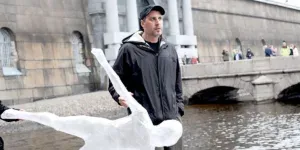 The Art of Disquiet
The Art of Disquiet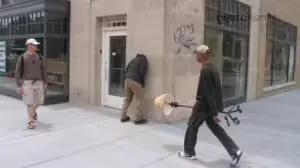 The Urban Context: A Theater for the Unexpected
The Urban Context: A Theater for the Unexpected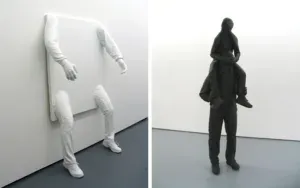 Public Reactions and Criticism
Public Reactions and Criticism